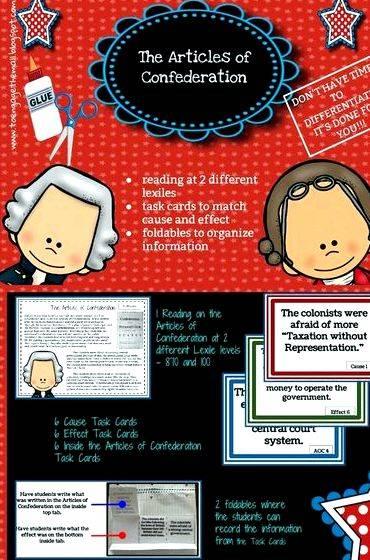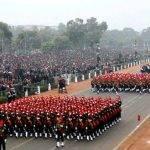Lesson at a Glance
This lesson (which will take place over several class periods) is the 2nd in a series of three extensive lessons in the unit. It is designed for the students to understand that while individual choice is good, there are times when conformity is necessary and citizens working together can bring about a state of sovereignty. Through this lesson, the students will discover the shortcomings of the Articles of Confederation and the importance of compromise. This lesson transcends back in time to 1777, to learn how and why it was important to replace the Articles of Confederation with the Constitution.
Objectives
- Students will list and describe the shortcoming of the Articles of Confederation.
- Students will have a deepened understanding why the Constitution was written and why it is referred to as a “living document.” (Constitution and components addressed in Lesson 1)
California State Standards (including Common Core)
Social Studies and History Standards:
5.7.1. List the shortcomings of the Articles of Confederation as set forth by their critics.
English/Language Arts Standards:
2.2 Write a persuasive letter or compositions:
2. a. State a clear position in support of a proposal
2. b. Support a position with relevant evidence
Common Core State Standards for ENGLISH LANGUAGE ARTS Literacy in History/SocialStudies, Science, and Technical Subjects – Writing
Text Types and Purposes
1. Write arguments to support claims in an analysis of substantive topics or texts, using valid reasoning and relevant and sufficient evidence.
a. Introduce a topic or text clearly, state an opinion, and create an organizational structure in which ideas are logically grouped to support the writer’s purpose.
Big Ideas, Essential Questions, and Higher Order Thinking
Big Idea(s):
- E Pluribus Unum: out of many, one. (From a variety of sources and experiences, we have developed a successful government and legal system)
- Through actions come change, and change in the political process involves participation. (The political process involves participation; understanding requires student engagement. Integration and application of new learning in multiple learning modalities helps students deepen understanding)
- Does social capital strengthen a republic?
- Is citizenship a right or responsibility?
Students will be evaluated through: Informal checks for understanding, teacher observation, writing prompts, class participation, formal assessment task.
Formal Assessment: Performance Task (GRASP) with scoring rubric.
Students will write a persuasive letter stating their position to ratify the Constitution. (Formal writing rubric)
Each team creates a list with:
1.) Problems.
2.) Under Constitution, how might this problem been avoided.
Post lists around the room (slide 19).
Students view other teams lists
Discussion amongst individual groups “Does Social Capital strengthen a republic?”
Class reflective on overall findings.
This actual activity should be completed in one class session.
Prior to this lesson, students will have studied the three branches of government, the preamble, various components of the Constitution and the Bill of Rights to so that they have an understanding that our government is a democracy and is intended to make things fair, safe, and equal for all citizens.

Lesson Activity Steps:
Hook:Life of Crime begins at 4….
Personal Story:Confessions of a 4 year old….
STUDENT INTRO ACTIVITY AFTER HOOK:
Before Activity: Have six sets of 15-20 pictures of desirable items that a 5th grader would want to own. Each set of pictures is mounted on one of the six colors of which that you will be running off fake money. Label these items/pictures with a reasonable price on the backside. Run off “play money” (1’s, 5,s, 10’s, 20’s) in the same six colors you mounted your pictures. Cut and divide up the colored money into an envelope for each student. Some envelopes will have the same colored currency while others will be an assortment of colors. Give each student the same mount of money in the envelope (i.e. $300) regardless of color. Give each student a clipboard and activity worksheet.
1. Make six large table groupings. Spread out desirable priced items (pictures) on the tables….make items enticing such as portable DVD player, Ipod, DVD’s, CD’s, Vacations to Hawaii, sports items, etc. Students are not to turn pictures over…yet.
2. Silently, students are to view all items at each table grouping and write down the top five items they would like to buy. The items they wish to buy can be from any table.
3. Hand out sealed envelopes with the colored currency to each student. They will discover that they may have enough money to buy one, two, or three of their items (you decide the price of each item) depending on the color of their currency.
4. Students open their envelopes and write down the color and amount of money that they have in their envelope (use clipboard)
5. Tell them they are to go back to the tables of their five choices, turn over the item and write down the price of each item. They can’t spend over their allotted amount of money in their envelope, and they can only purchase items of the same color of currency.
6. What happens? Can some buy everything because they have the correct color and amount of money that goes with the item? Are some frustrated because they can’t use their money on any of the items they wrote down?
7. Have a class discussion…..make a list of student comments.
Special Needs of students are considered in this lesson: Heterogeneous groups at tables will allow for stronger process and products. Grouping gifted learners with grade level students and learning challenged students with grade level peers is suggested for best results. Hands on learning through images, words, discussions, and collaborating efforts will help multiple modalities in understanding and help to elevate to higher order thinking scenarios.
Materials, Resources, and References
Materials and Resources Needed For BUYING SPREE game:
Six tables or six table groupings, each table/group needs 15-20 different, large, laminated pictures of desirable items for 5th graders, six types of currency in denominations of 1’s, 5’s, 10’s and 20’s (money run off in 6 different colors), envelopes, price labels, clipboard, paper, pencils, maps, activity state cards, handouts.
Reflections, United States History: Making a New Nation, Harcourt School Publishers, 2007




 Writing articles for money uk 100
Writing articles for money uk 100 What is content article writing
What is content article writing Article writing on republic day in trinidad
Article writing on republic day in trinidad Article writing skills english language
Article writing skills english language Writing articles for the onion spokane
Writing articles for the onion spokane






